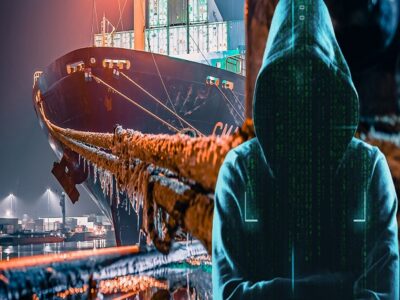The maritime industry, once operating quietly behind the scenes, has recently been thrust into the spotlight. Events over the past few years have underscored just how vital this industry is to the lifeblood of our nation. Ports are the gateways for goods, military supplies, food, medical equipment, and energy resources, and they are indispensable to our economic stability and national security. Yet, as automation and semi-automation infiltrate port operations, they introduce a new and significant threat: the vulnerability of these systems to cyberattacks and technological failures.
The 2017 NotPetya cyberattack on APM Terminals was a chilling example of what’s at stake. This ransomware attack crippled terminal operations at 17 facilities worldwide, forcing many to shut down systems and revert to manual operations. The fallout disrupted supply chains, delayed cargo movements, and caused financial losses on a global scale. This wasn’t just a one-off incident but a glimpse into the potential devastation hackers can wreak on interconnected systems.
In recent years, so-called “glitches” in terminal operating systems and gate systems have further highlighted the fragility of automated systems. Whether due to technical failures or malicious actors, these disruptions are a clear warning of the dangers automation poses to the operational resilience of our ports. The stakes could not be higher.
Ports are not just economic hubs; they are critical to national defense. A cyberattack targeting U.S. ports could halt the movement of essential goods, delay military equipment, and undermine the nation’s ability to respond to emergencies or crises. Imagine ships stranded at sea, cargo piling up, and critical supplies trapped in terminals. The result would be catastrophic for both the economy and national security, plunging the country into chaos.
The economic impact of a cyberattack would extend far beyond the immediate shutdown of a port. Businesses that rely on imported goods would face shortages, supply chains would collapse, and consumers would see skyrocketing prices. The nation witnessed the fragility of supply chains during the COVID-19 pandemic; a cyberattack would be far more destructive, leaving industries, workers, and families scrambling to recover.
Hackers and tech terrorists see automation as an opportunity. Automated systems rely on interconnected networks, making them susceptible to infiltration and disruption. The very systems designed to replace human workers introduce vulnerabilities that can be exploited by malicious actors. Ports, once fortified by human oversight and adaptability, are now becoming liabilities as they increasingly depend on technology.
While these risks grow, the International Longshoremen’s Association (ILA) workforce continues to stand on the front lines, serving as a critical layer of defense against domestic threats at our ports. Longshore workers are trained to remain vigilant, aware of their surroundings, and to follow established protocols if they notice suspicious activity. Their presence and proactive measures are a bulwark against potential security breaches.
Consider for a moment what COVID-19 could have looked like if ILA members had stayed home, gripped by fear from the widespread panic and misinformation. Instead, these essential workers reported to duty, ensuring that goods flowed seamlessly through ports during one of the most challenging times in modern history. Their courage and dedication kept America moving when the rest of the nation was at a standstill.
Adding to the challenge, mainstream media—controlled in part by private equity firms investing in U.S. ports and infrastructure—has been shaping a false narrative to portray the ILA as stalling progress and innovation. This couldn’t be further from the truth. As Sara Shaleen (Masterson) recently pointed out in her rebuttal to the media’s propaganda, the ports operated by ILA members are ranked far higher globally than reported. The ILA’s strength in bargaining has effectively countered the outdated productivity argument, forcing employers to shift the focus to densifying terminals for capacity and throughput.
The employers’ claim that density requires full automation falls apart under scrutiny. In today’s technological age, there is no reason cargo-handling equipment manufacturers cannot produce RMGs (rail-mounted gantries) that allow ILA operators to perform the full movement of cargo. This solution would meet the employers’ goal of greater density while preserving the jobs of the skilled workers who make these ports among the best in the world.
The truth is that automation does not safeguard operations—it exposes them. And as these systems expand, so does the attack surface for hackers and tech terrorists. Ports are the front lines of commerce and security, and a failure to protect them leaves the entire nation vulnerable.
The U.S. must act decisively to address these vulnerabilities. Safeguarding ports against cyber threats is not just a matter of economic stability—it is a matter of national security. Policies must be implemented to ensure that ports remain resilient, and cybersecurity must become a top priority for the maritime industry.
The risks posed by automation and semi-automation far outweigh any purported benefits. Our ports, the backbone of American commerce and defense, must not be left at the mercy of hackers and tech terrorists. This is a fight we cannot afford to lose.







Leave a Reply